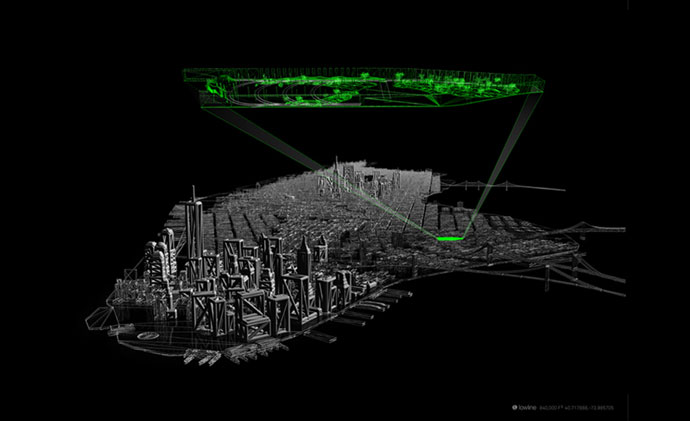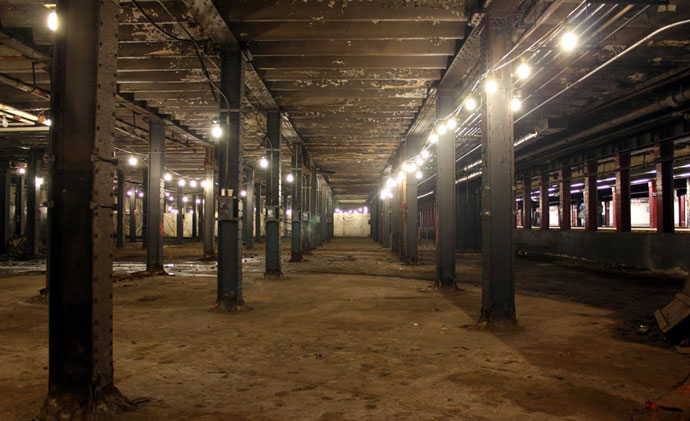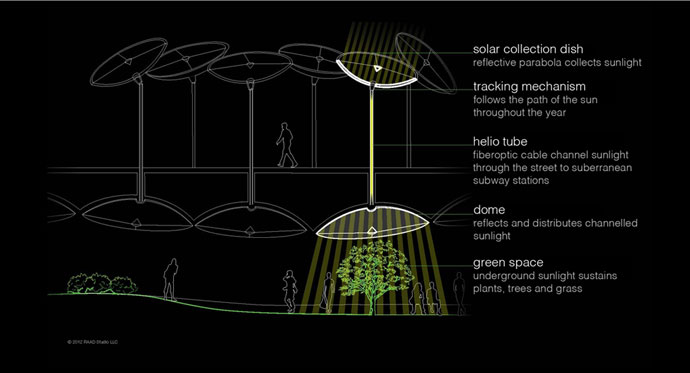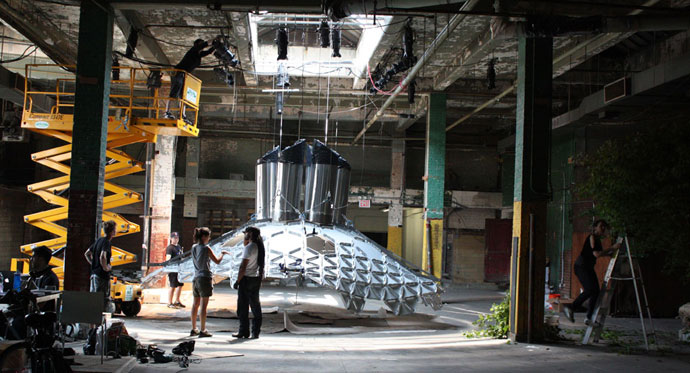NYC’s Lowline Could Become First Underground Park In The World
Imagine a new green space amid the busy hustle and bustle of Manhattan: Trees grow in pools of sunlight while musicians perform, kids play and participate in educational programs and solar lights provide illumination. It’s also 20 feet underground.
The proposed Lowline park will, when completed, be the opposite of the West Side’s High Line — rather than being built on an elevated freight rail line, the Lowline’s home will be an abandoned trolley terminal on the East Side.

The Lowline
The Williamsburg Trolley Terminal, according to Lowline.org, was opened in 1908 and used until 1948, when trolley service was discontinued. The 1.5-acre site still contains lots of juicy historical remnants like cobblestones, vaulted ceilings, steel columns and old trolley tracks.

The Lowline
The creators of the Lowline want to turn this unused space into an underground park that will host cultural programming, retail stores and commuters, in addition to being a vibrant green space.
The Lowline aims to build a new kind of public space — one that highlights the historic elements of a former trolley terminal while introducing cutting-edge solar technology and design, enabling plants and trees to grow underground,” says the organization on its website.

The Lowline
The new park’s solar technology was designed by James Ramsey of Raad Studio to bring sunlight underground. After passing through a solar collection dish made of glass, the light is gathered at a focal point and funneled underground through a special tube filled with fiber-optic cables; it’s then reflected by a dome on the park’s ceiling, allowing plants to grow. No electricity would be needed to light the Lowline when it’s sunny outside. According to the project’s Kickstarter page (it was funded back in April 2012 for a total of $155,186, which was used to create a mini Lowline to demonstrate the park to investors), the cables filter out the UV rays that cause sunburn, so visitors will get all the benefits of sunlight without the harmful side effects.

The Lowline
Dan Barasch, who specializes in promoting “socially innovative applications of technology,” according to Delaware Online, and Ramsey, a former NASA engineer, got the idea for the park when they heard about the abandoned site; they’d already been experimenting with new solar technology, so the two ideas seemed like a natural fit.
We’re simply taking over a space no one was using in a densely populated neighborhood that lacks sufficient public space,” Barasch told Delaware Online.
Current plans aim for the park to be built over the next five years. Using hundreds of volunteers and millions of dollars in mostly government funds, the fiber-optic cables must be installed and positioned so plants can grow — quite a feat, considering the cables have to reach through the streets of New York City.
Introducing the Lowline Lab from The Lowline on Vimeo.
Many have criticized the plans for the Lowline, questioning its plausibility, creepiness, heating and cooling system (or lack thereof) and potential dankness. However, Barasch tells the New York Press that the park will be “a cultivated underground garden which will certainly change people’s perspective on what’s possible.”







































